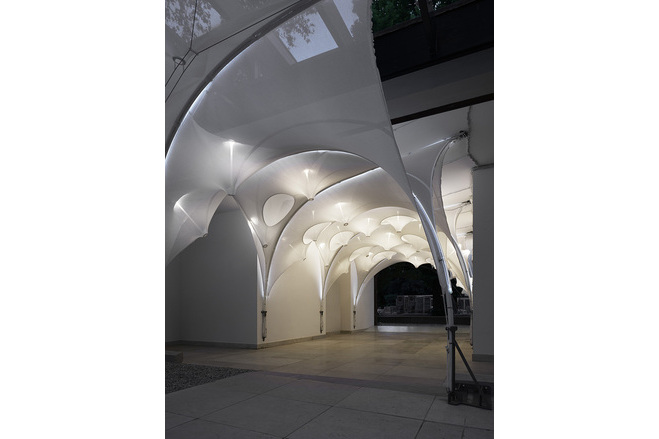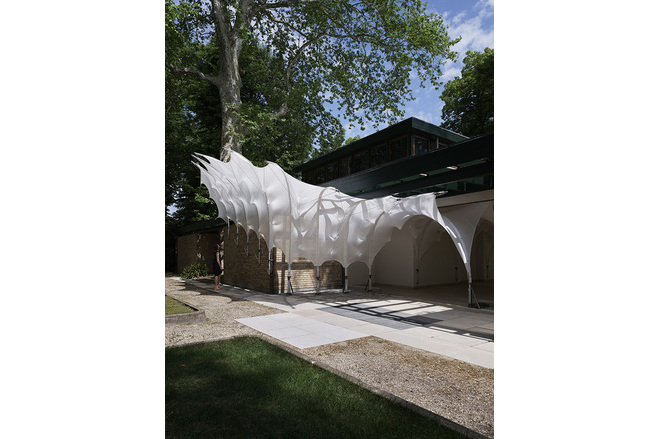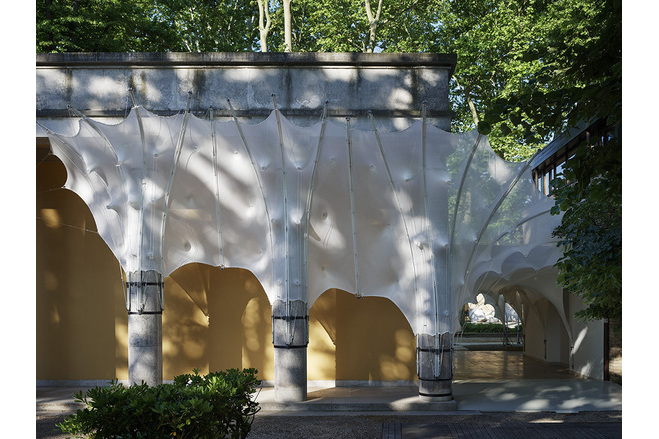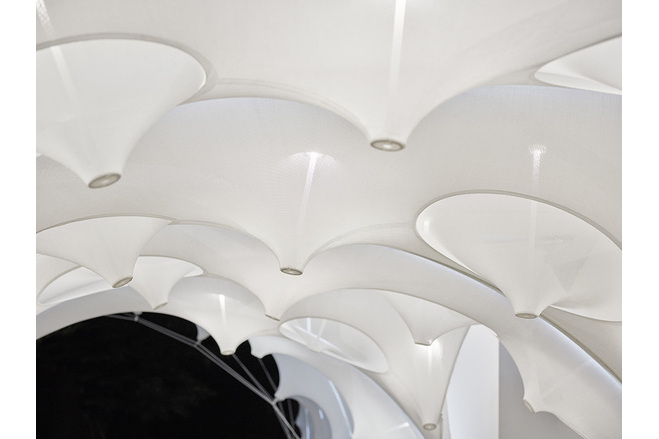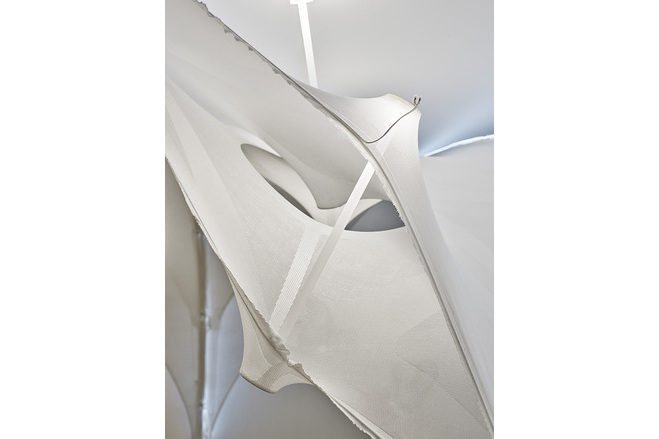Installation 'Isoropia' at Danish Pavilion
General information
-
Home page
https://royaldanishacademy.com/news/isoropia-nominated-archdaily-building-year-award
-
Location address
Danish pavilion, Venice Biennale
-
Location country
Italy
-
Year of construction
2018
-
Function of building
Exhibition
-
Degree of enclosure
Open structure
-
Climatic zone
Mediterranean - mild winters, dry hot summers
-
Number of layers
mono-layer
-
Type of application of the membrane
attached
-
Primary function of the tensile structure
- Space defining elements
Description
CNC (Computer Numerical Control) knit was used for the first time in a large scale morphing textile structure for the Danish Pavilion in the 2018 Architectural Biennale. The installation 'Isoropia' – Greek: meaning balance, equilibrium and stability - is more than 35m long and made of more than 40 custom CNC knitted membranes of up to 7m length. These are set in structural equilibrium with bend glassfibre rods of varying strength. The structure creates a spatial and structural continuum through the Danish Pavilion, forming differentiated outdoor canopy structures on the two outer sides and a vaulted space in the interior. Similar to the spatial expression the structural system morphs from a cablenet system, which prestresses and stabilises the structure to one, which uses tensegrity like compression elements to prestress the knitted membrane.
'Isoropia' explores new territories in terms of Fabrication, Material, Detailing and Assembly, as well as simulation and possible spatial and aesthetic expressions in Form Active Hybrid Structures. The installation uses knit as a textile membrane. Knit is softer and less homogenous than traditional laminated membranes and can therefore be used at very different scales. Isoropia' is knitted in Dyneema®, a high performance fibre with practically no stretch. The material performance of the knit - its ability to stretch and deform is therefore uniquely down to the structure of the knit. In 'Isoropia' we vary the knit structures to compose areas of more or less stretch. By building our own interfaces between the computational design environment and the digital knitting machine we are able to control fabrication at stitch by stitch level. The textile are bespoke produced as one-off custom patches and detailing such as the channels, the protrusions and perforations are controlled directly from the design environment.
The ambitious project, which went from design sketch to assembly in only 4 month time builds on an interdisciplinary collaboration between CITA, Centre for IT and Architecture (design and computation), str.ucture (engineering), AFF - A. Ferreira & Filhos, SA (knit fabrication), DSM Dyneema B.V (fibre) and alurays lighting technology GmbH (lighting). It extends here the established workflows and introduces a new level of design integrated simulation with a tri-fold simulation strategy in the work flow from design in Kangaroo 2 engineering, fast structural assessment of dynamic loads with the Isogeometric Analysis in Kiwi (str.ucture) and a detailed FEA of details in Sofistik.
'Isoropia' is an example of collaborative innovation. It is the product of a broad interdisciplinary collaboration crossing academia and practice exploring methods for developing light-weight simulation tools and workflows for active bend and hybrid structures.
As such, 'Isoropia' showcases how small distributed groups, who meet over internet or loose networks as the COST action “Novel Structural Skins” are able to innovate industry. This grassroots innovation is community led and open source, creating a free-space for imagining what the material practices of architecture can be. The community forms around the development of Kangaroo and similar software tools and contributions which led to Isoropia came among others from members of: CITA, Department for Structural Design and Technology (KET), University of Arts Berlin, Fosters + Partners, Robert McNeel & Associates, Technical University of Denmark, Format Engineers and Mule Studio.
Description of the environmental conditions
Material of the cover
-
Cable-net/Fabric/Hybrid/Foil
Hybrid
Main dimensions and form
Duration of use
-
Temporary or permanent structure
Temporary
Involved companies
Editor
-
Editor
Evi Corne


